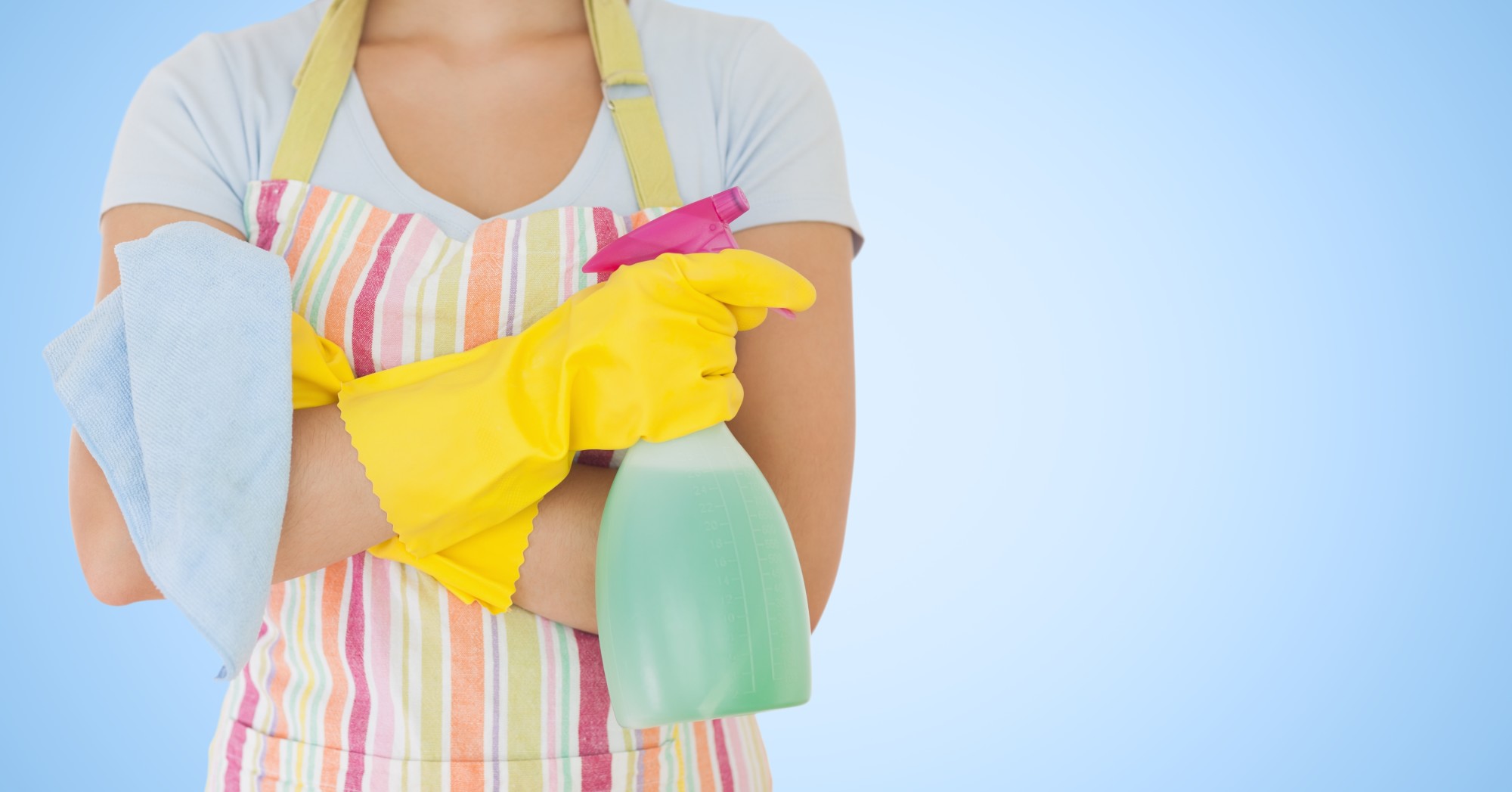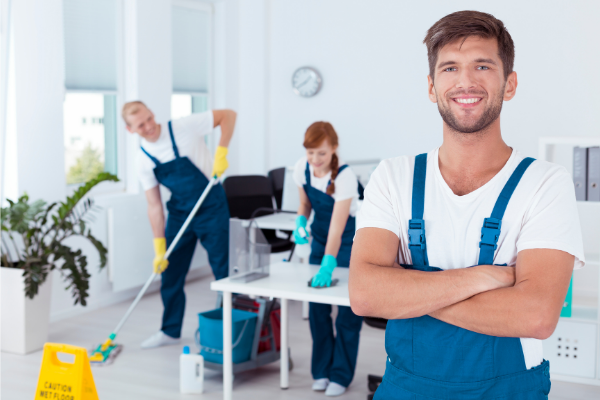Important Tips for Everyday Cleaning: How to Defrosted and Cleaned Every Few Months for a Fresh Home
Important Tips for Everyday Cleaning: How to Defrosted and Cleaned Every Few Months for a Fresh Home
Blog Article
Comprehending the Requirement for Extensively Decontaminating and Disinfecting Frequently Touched Surfaces in High-Traffic Locations
In the world of public health and security, the precise sanitation and sanitization of frequently touched surface areas in high-traffic areas stand as paramount measures in preventing the spread of damaging microorganisms. By discovering the different aspects of surface area disinfection, from the dangers associated with ignoring cleaning procedures to the reliable techniques that can be used, a more clear understanding arises of the crucial duty these methods play in securing public wellness.
Relevance of Surface Area Disinfection
Emphasizing the thorough sanitation of high-traffic surfaces is crucial in maintaining a hygienic setting and avoiding the spread of harmful microorganisms. High-touch surface areas such as door manages, light buttons, elevator buttons, and countertops work as breeding premises for viruses and germs. Routine sanitation of these surfaces is imperative to minimize the danger of contamination and transmission of diseases.
By carrying out a durable sanitation procedure, services and organizations can develop a much safer setting for employees, customers, and visitors. Appropriate surface sanitation not only reduces the spread of infectious diseases yet also instills self-confidence in the cleanliness and safety and security of the facilities. This positive approach demonstrates a commitment to health and wellness, which is particularly vital in high-traffic areas where the likelihood of direct exposure to virus is enhanced.
Moreover, surface area disinfection plays an essential role in total infection control techniques. Integrated with hand health practices, using masks, and keeping physical distancing, complete disinfection of high-touch surfaces develops a detailed protection versus the transmission of harmful microbes. Focusing on surface sanitation is an essential element of an all natural method to health and wellness in common areas.
Threats of Disregarding Cleansing Practices
Ignoring extensive sanitation of high-traffic surfaces considerably increases the danger of viral and bacterial contamination, posturing a severe risk to the health and wellness and security of individuals often visiting these areas. Failure to carry out correct cleaning techniques can cause the build-up and spread of harmful microorganisms, including infections and germs, on often touched surfaces such as doorknobs, handrails, lift buttons, and counter tops.

Moreover, disregarding the relevance of complete cleansing not just compromises the health of individuals yet likewise weakens efforts to keep a clean and sanitary atmosphere. It is important to recognize the relevance of proper disinfection methods in preventing the spread of infections and securing public health and wellness.
Reliable Disinfection Approaches
To maintain optimal sanitation and decrease the danger of contamination on high-traffic surface areas, employing efficient disinfection approaches is vital. Among one of the most effective and usual sanitation methods is utilizing chemical disinfectants. These products can differ in stamina and structure, with some targeting particular virus like bacteria or viruses. It is essential to adhere to the producer's directions for appropriate dilution, call time, and air flow when using chemical anti-bacterials to ensure their efficiency - Scrub the Surfaces.
Another effective approach is the usage of UV-C light. UV-C light has actually been revealed to be reliable in eliminating a large variety of bacteria by interrupting their DNA structure, therefore avoiding them from duplicating. It is important to use UV-C light effectively, guaranteeing that the right strength and exposure time are applied to attain the preferred disinfection outcomes.
Furthermore, employing vapor cleaning as a sanitation technique can be very reliable, specifically on surfaces that are heat-resistant. Heavy steam can penetrate permeable surface areas and eliminate germs, viruses, and other virus efficiently. When making use of steam cleansing, it is necessary to make sure that the surface reaches the called for temperature for a sufficient quantity of time to guarantee appropriate sanitation.
Impact on Public Health And Wellness
The maintenance of high standards of tidiness and disinfection on high-traffic surface areas plays an important function in securing public health and wellness. Often touched surface areas in areas with high tramp, such as doorknobs, handrails, lift switches, and toilet centers, offer as breeding grounds for damaging microorganisms.
Efficient cleanliness practices not only shield people from dropping sick however also add to the general wellness of society. Public health and wellness authorities emphasize the importance of keeping tidy atmospheres to stop break outs and include the spread of diseases. In high-traffic locations like airport terminals, institutions, health centers, and public transport systems, the effect of rigorous sanitation procedures can not be underrated. Prioritizing the sanitization of regularly touched surface areas is a proactive strategy to advertising public health and boosting the safety and security of people in common areas.
Applying Routine Cleaning Procedures
Promptly setting up and adhering to a consistent routine of cleaning procedures is paramount for keeping the sanitation and safety and security of high-traffic surface areas. Normal cleaning procedures are necessary in stopping the accumulation of germs and virus on often touched surfaces, particularly in areas with high foot traffic. By executing a methodical approach to cleansing, organizations can properly minimize the danger of condition transmission and create a healthier environment for staff members, customers, and the general public.
To develop an effective cleansing routine, it is essential to determine high-traffic areas that need constant interest. These areas may include doorknobs, handrails, elevator switches, bathroom centers, and shared tools. Executing a regular cleansing program that targets these surfaces several times a day can considerably minimize the spread of unsafe germs and infections.
Additionally, utilizing appropriate cleaner and anti-bacterials is crucial to making certain that surfaces are extensively sterilized. Normal training of cleaning up team on proper cleaning methods and the significance Vacuum Carpets of adherence to the cleaning routine is also essential in preserving a hygienic atmosphere. By prioritizing consistent cleaning procedures, companies can promote the health and wellness and health of people who engage with these high-traffic surfaces.

Conclusion
In conclusion, it is critical to focus on thorough sanitation and sanitization of frequently touched surface areas in high-traffic areas to stop the spread of unsafe microorganisms and keep public wellness. It is vital to identify the significance of preserving tidy surface areas in high-traffic areas to make certain the wellness of the community.
In the realm of public health and wellness and security, the thorough sanitation and sanitization of regularly touched surface areas in high-traffic areas stand as critical measures in stopping the spread of dangerous microorganisms. By discovering the numerous facets of surface disinfection, from the dangers linked with neglecting cleansing methods to the effective techniques that can be used, a clearer understanding emerges of the crucial duty these methods play in guarding public health.Furthermore, employing vapor cleansing as a disinfection technique can be very efficient, specifically on surfaces that are heat-resistant. When using steam cleaning, it is vital to make certain that the surface reaches the required temperature level for a sufficient quantity of time to assure appropriate sanitation.
In final thought, it is important to focus on detailed disinfection and sanitization of often touched surface areas in high-traffic locations to prevent the spread of damaging microorganisms and keep public health.
Report this page